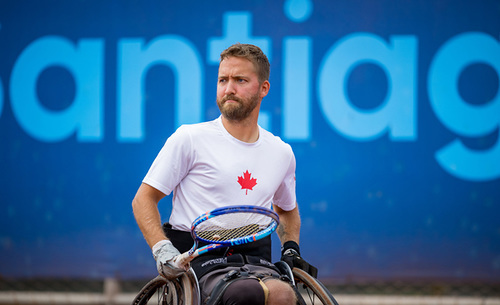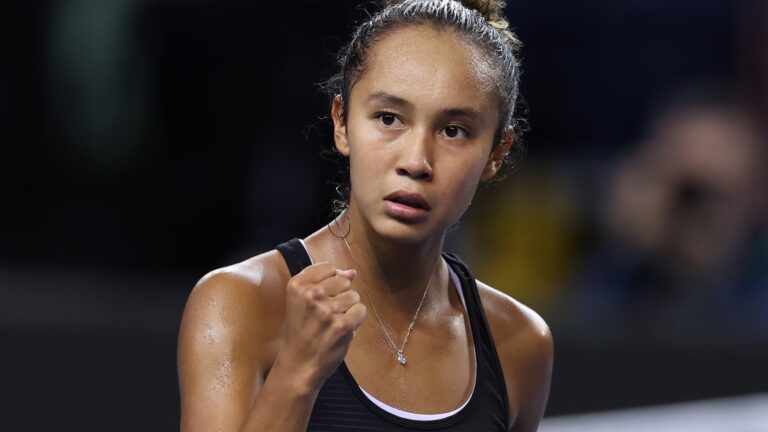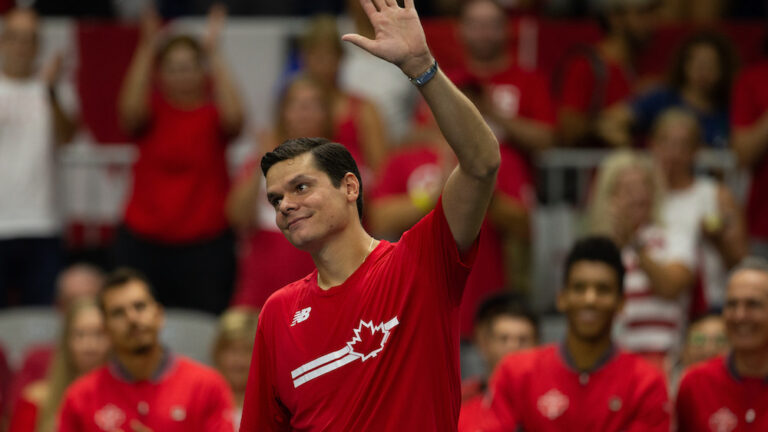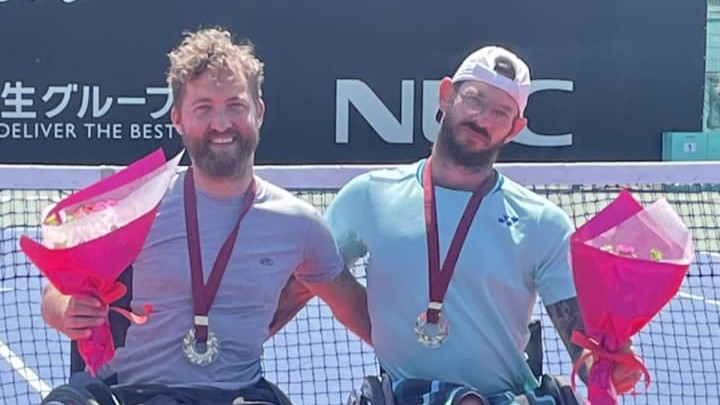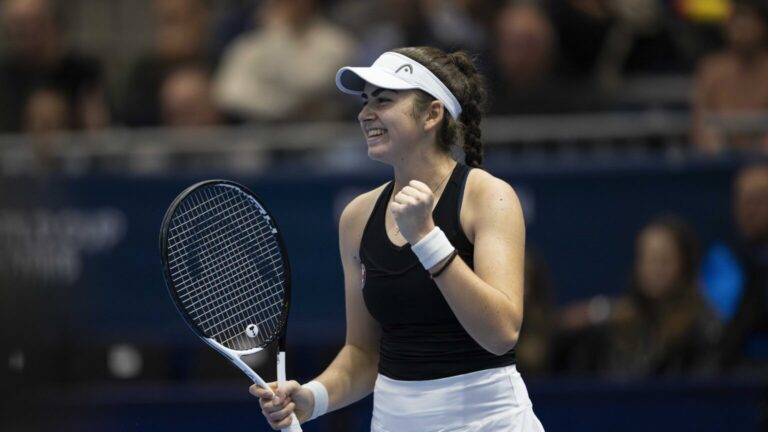
Tennis has changed a lot in the past three or four decades.
Players today hit harder than ever, and they have their strength trainers to thank.
Maria Sakkari of Greece and Marton Fucsovics of Hungary (pictured above) are among the most muscular athletes on the tours and perhaps the most representative of the new generation of players who are more focused on training than their predecessors.
Some pros carry a little less muscle, while a majority look a lot like the players who competed in the 70s, 80s and 90s.
So, how important is a ripped physique in tennis?
For an informed response, I turned to a professional: Virginie Tremblay, kinesiologist and strength and conditioning coach at Tennis Canada’s National Training Centre.
She works with athletes at the Centre and at tournaments around the world. On the day I met her at the gym, she was working with Kayla Cross and Mia Kupres, two of Canada’s most promising juniors, just before they jetted off to Turkey to compete.
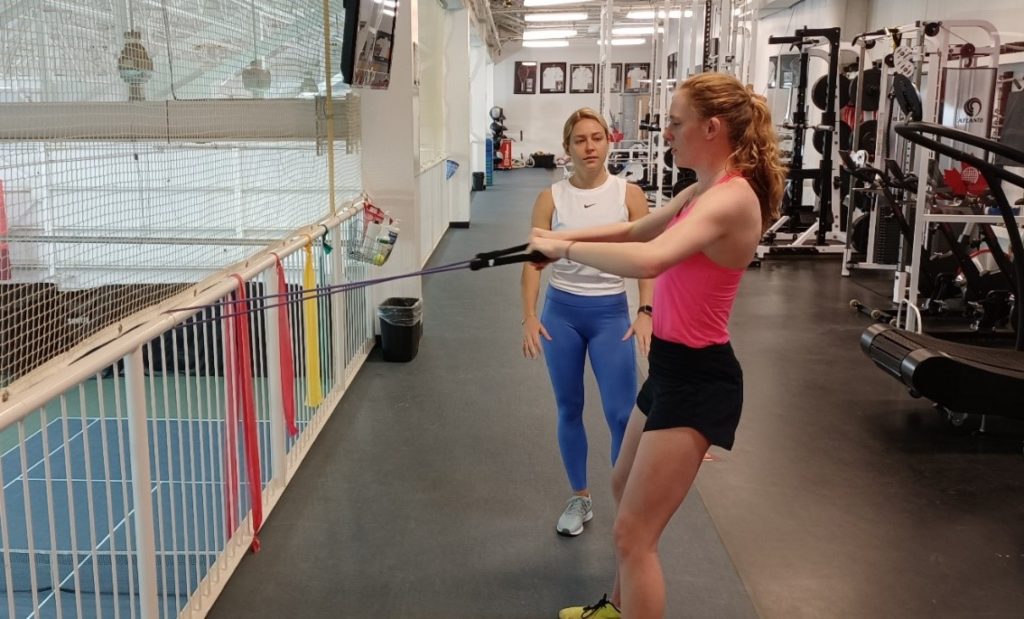
Strength, yes. Flexibility, yes.
First, what do fitness coaches do? In tennis, their job is to make sure athletes are physically prepared to expend the energy required to compete in an increasingly demanding sport and help prevent injury. Beyond the exercises focused on aerobics, speed, agility, mobility, flexibility and coordination, there is necessarily muscle training to build strength, power and endurance.
“Over the years, tennis has become more and more physical. The game is faster, the shots are harder, the footwork is quicker and more explosive and there’s a huge amount of repetition. There are also accelerations and changes in direction,” explained Virginie.
“So, it’s much more physically demanding, and strength training has become critical. Not only does it enhance a number of physical qualities, including power and speed, it helps prevent injury. And it’s just as important and relevant for men and women of all ages.”
The good and the bad
There are different types of strength training: maximum strength, speed strength, explosive strength, endurance strength and more. It’s not something you do every day, and it’s important for athletes to mix things up with cardio and sessions to perfect aspects like speed, agility, mobility, flexibility and proprioception. And don’t forget: all athletes are different and have their own needs and goals.
But, before we go any further, what’s proprioception?
“It’s the ability to sense your body and your limbs in space, like balance and stability. We can work on single-leg exercises on a stable or unstable surface, with eyes closed or open, on a Swiss or Bosu ball, etc. It’s a really important part of training for athletes owing to the different surfaces and body postures on shots. Tennis players must be stable in unstable situations. Some people refer to it as dynamic balance,” she said.
They say less is more, and a healthy balance is still the way to go in many aspects of life. With players like Sakkari and Fucsovics in mind, I asked Virginie about the good and the bad of having such significant muscle mass.
First, the good.
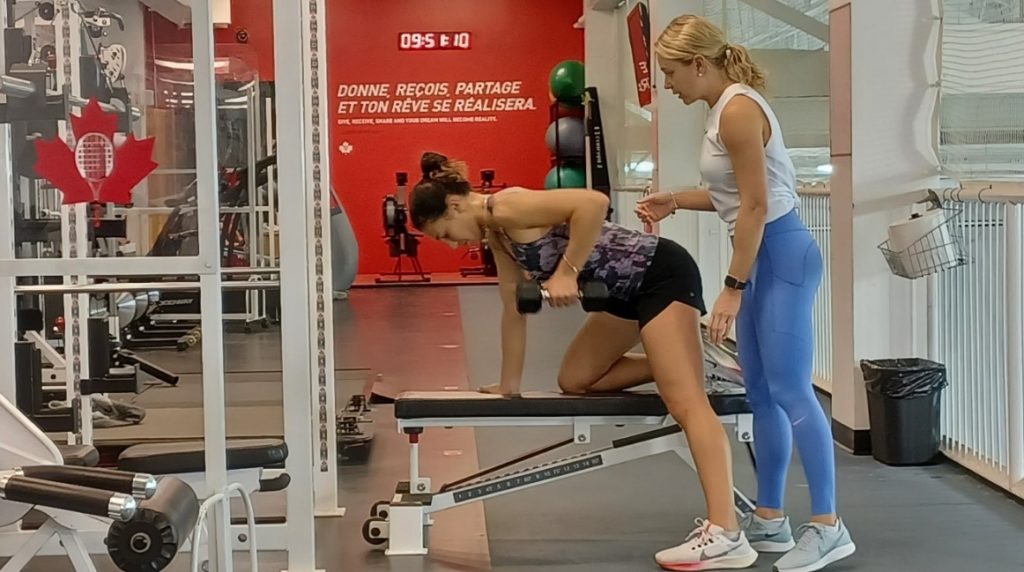
“Strength training helps prevent injury, especially when it comes to the tendons and ligaments in the shoulders, hips, knees and ankles. The constant shot repetition and upper body rotation can lead to injuries caused by overuse. So, being stronger can prevent some back, abdominal, adductor, shoulder and knee injuries,” she said. “Strength training helps you hit with more force and be more powerful and explosive in your accelerations and decelerations and ultimately less tired and less sore after workouts and matches.”
Knowing how quickly the next match comes, especially for players who win a lot, the benefits of strength training are clear.
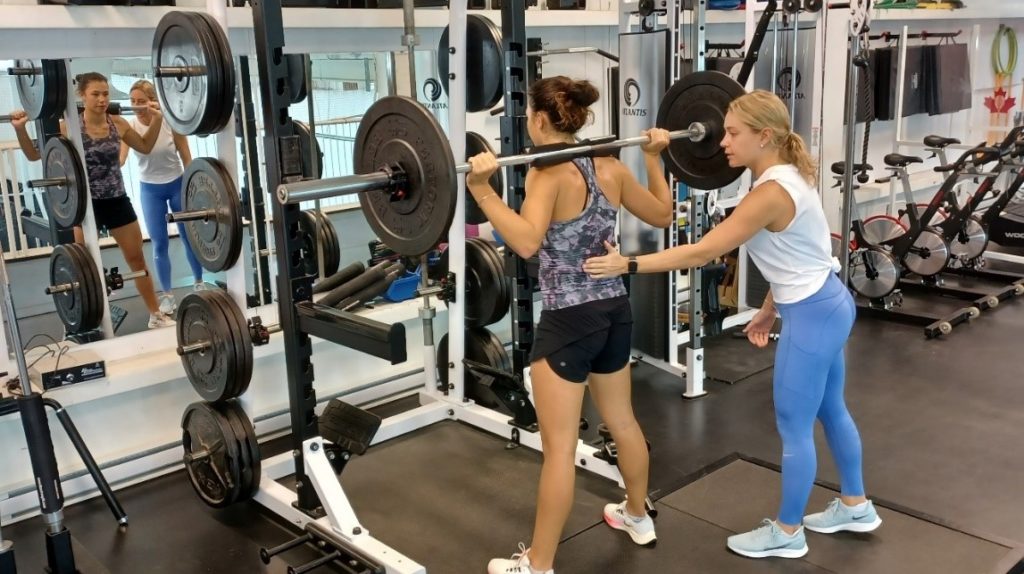
And the bad?
Virginie explains that one of the major drawbacks has to do with muscle tension.
“In tennis, the rhythm changes a lot, and you’re always going back and forth between being relaxed before hitting and being ready when the impact occurs. When the muscles are overly tense, there’s a high risk of injury like strains, sprains and cramping. Significant muscle mass can also restrict range of motion.”
There’s another risk, too.
“Muscles that are too large or too prominent can limit the mobility of certain parts of the body and the upper body in particular. That can impact rotation. In some cases, the loss of mobility means a player won’t be able to reach certain balls or hit certain shots. The player will then compensate with other parts of the body and develop bad habits that can be detrimental in the long term.”
So, can a player be too muscular?
Yes, says Virginie:
“For example, if a player’s upper body is too muscular, they’ll have to expend more energy to transfer that muscle mass every time they move around the court. In the long run, that can become exhausting and too physically taxing match after match and tournament after tournament.”
The early bird…
For any young player who has the potential to join the ranks of the world elite, strength training is a very good thing. Still, Virginie notes that it’s important to remember that kids and teens are still growing. In their case, caution is key.
“Learning the basic movements using the right technique and the young player’s body weight is sufficient. Over time, growth and maturity means greater loads and more complex exercises. The strength training should be on a regular basis. It should be controlled and adapted to the person’s training phase.”
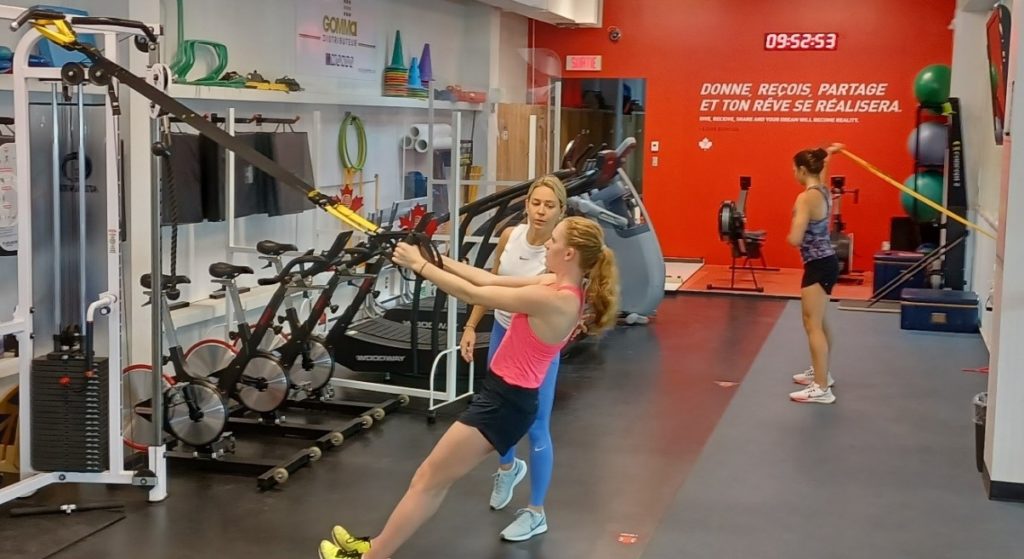
Critical asset
Every tennis pro needs a coach. And not far down the list is a strength and conditioning coach.
Just ask Virginie.
“Players know they have to invest time and money in their body to be competitive. Their body is their work tool, and if it isn’t on point, they won’t be able to optimize their potential and move up as fast as other players at tournaments and in the rankings. The competition is so fierce that physical preparation is inescapable. You have to see it as a long-term investment to have a longer career that’s injury free.”
There’s a type
I asked Virginie if we’ll be seeing more players like Maria Sakkari in the coming years, despite the risks that come with significant muscle mass.
She said, in a perfect world, she’d like to see more muscular players as fit as Sakkari or Fucsovics but doesn’t think it’ll happen any time soon, since their level of fitness requires a lot of discipline from the physical and nutritional perspectives.
And, let’s face it, you also have to enjoy hitting the gym.
“People’s genetics and body type also come into play. Some people are very muscular, others are thinner: even if they train every day, they’ll never have large muscles. It depends on the body’s muscle fibres. Still, I don’t think you need to be that muscular to be a great tennis player. That takes balance and a musculature specific to tennis: long and lean, agile, quick, explosive, strong and fit, like Federer or Djokovic.”
Her explanation provides a lot of insight into why there are few powerhouse players in the Top 100.
Indeed, there are as many body types as there are athletes.
And that’s where strength and fitness coaches come in, since they have the skills and experience to know what’ll work for their athletes.
For a strength and conditioning coach, when all the pieces fall into place, the stars align and a player is healthy, there comes a reward that’s greater than money or celebrity: it’s being a link in the chain that takes an athlete to the highest levels.
Remember 2019?

